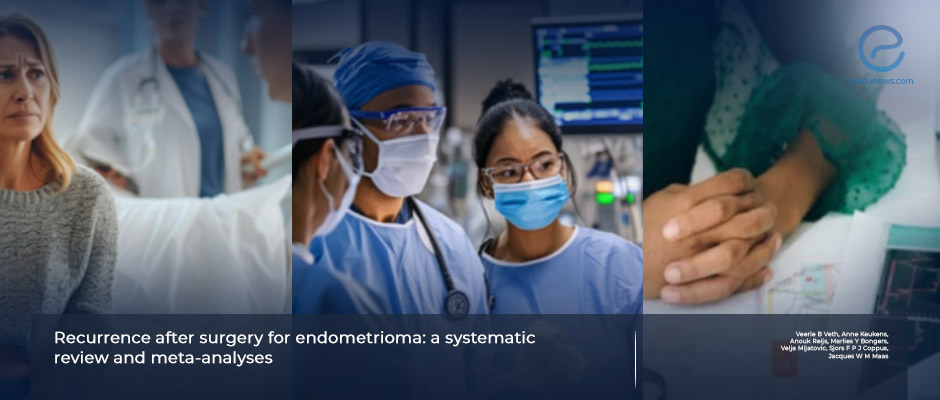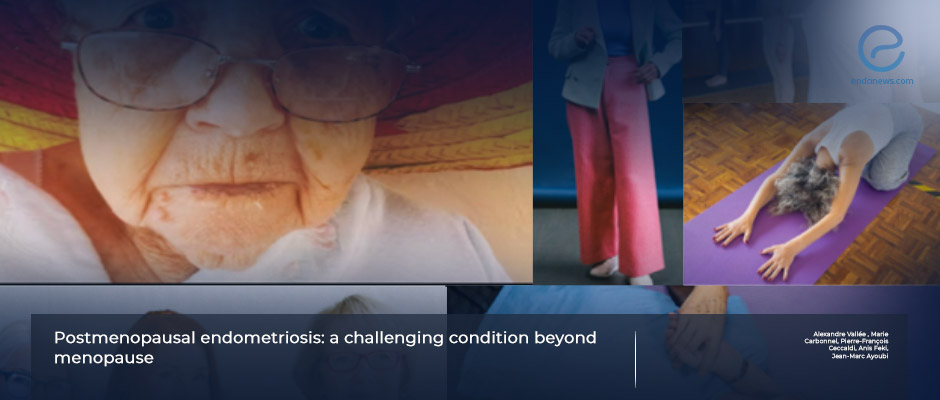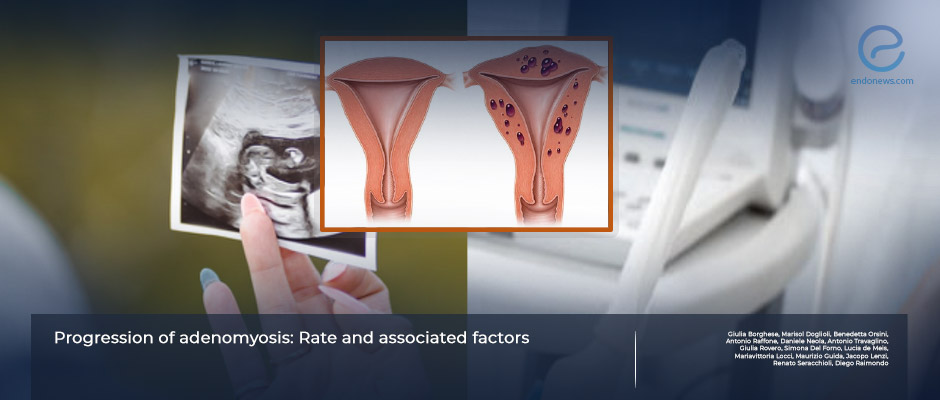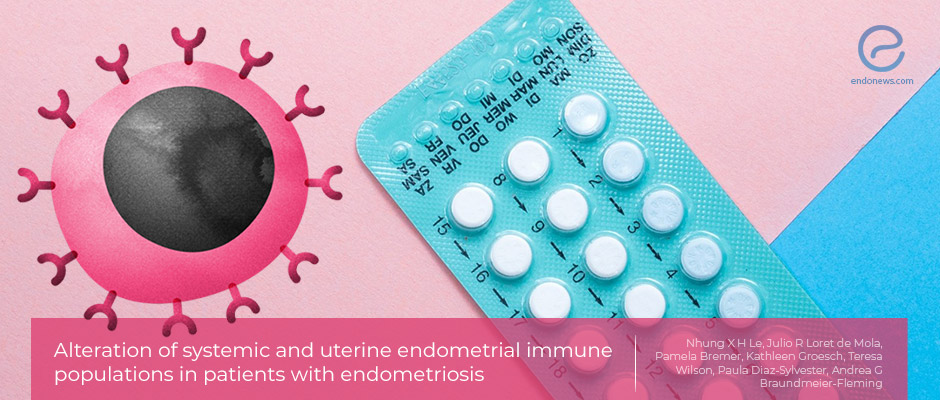May it be a new non-hormonal treatment option for endometriosis patients?
Heidi Ledford published a news in Nature, entitled “How understudied endometriosis causes pain for hundreds of millions of women”. She aimed to summarize the recent status about endometriosis treatment options. Pain-sensing nerves and immune cells interact to worsen both pain…
Key Points Lay SummaryPost Surgery Endometrioma Recurrence
Endometrioma is a common form of endometriosis. Endometrioma cystectomy is the preferred treatment, as it is more effective than ablation or laser vaporization in reducing pain and recurrence. While medical treatment can help prevent recurrence after surgery, postoperative hormonal therapy…
Key Points Lay SummaryA literature review about postmenopausal endometriosis.
Typically, endometriosis disease brings relief to women after menopause, but some individuals continue to develop some endometriosis-related issues even after the cessation of menstruation. This enigmatic condition, called postmenopausal endometriosis, needs to be understood, and the disease must be diagnosed…
Key Points Lay SummaryStudy Identifies Factors Associated With the Risk of Adenomyosis Progression
The disease progression rate of adenomyosis at one-year follow-up is 21.3%, according to a new study published in the International Journal of Gynecology & Obstetrics. For hormonally untreated patients this rate is 30.77% while for those who were hormonally treated, it…
Key Points Lay SummaryWomen's willingness to donate menstrual blood for endometriosis research
The menstrual blood is 50-100 ml/per cycle, with 80% lost during the first three days. On the heaviest bleeding day, 2 to 8 ml may be collected from a cup worn for four hours. This fluid could be investigated by…
Key Points Lay SummaryEarly use of hormonal contraceptives and the probability of endometriosis diagnosis later in life
Hormonal contraceptives are the first-line medical treatment of endometriosis. If an adolescent has chronic pelvic pain and is an "unresponder" to hormonal therapy, the likelihood of having an "endometriosis diagnosis" is higher. This sign should warn clinicians about endometriosis diagnosis…
Key Points Lay SummaryPeritoneal fluid in young women with endometriosis
Many blood substances are present in peritoneal fluid due to their derivation from the transudation of blood through the peritoneal surface. Ectopic endometriotic lesions can also change the medium to contribute to the definition of the local environment of the…
Key Points Lay SummaryTreatment of superficial dyspareunia using topical estrogens in postmenopausal women with a history of endometriosis
Genitourinary syndrome of menopause is defined as a collection of symptoms and signs caused by hypoestrogenic changes to the labia majora/minora, clitoris, vestibule/introitus, vagina, urethra, and bladder that occur in menopausal patients. Sexual dysfunction and superficial dyspareunia can be experienced…
Key Points Lay SummaryIs continuous hormonal treatment safe and healthy method for endometriotic patients?
One of the studies related to the search for new markers in pathophysiologic causes of endometriosis is circulating microparticles and their subset "tissue factor". In response to damage, activation, or apoptosis, these microparticles are found in human plasma, urine, saliva,…
Key Points Lay SummaryMenopause-management strategies for women with endometriosis.
Menopausal hormonal therapy is the most effective treatment for menopausal symptoms, such as hot flushes, sweating, sleep disturbances, mood changes, and joint pain. Approximately 75% of all women experienced some degree of these symptoms, while 2-4% were diagnosed with endometriosis. Menopausal…
Key Points Lay Summary2023 MedicalConferance: Pros and cons of hormonal interventions for endometriosis - Sarah Berga, MD
Prof. Berga, MD., who is the Chair of Ob&Gyn at Jacobs School Medicine and Biomed Sciences, presented this speech at the 2023 EFA Medical Conference. Dr. Berga explains that the primary goals of endometriosis treatment are to reduce pain and improve quality…
Key Points Lay SummaryLaparoscopic resection of bladder endometriosis
When we talk about deep-infiltrating endometriosis, one of the most commonly affected organs in the urinary tract is the bladder, with a prevalence of 80%. Bladder endometriosis can be defined as the existence of the endometrial glands and stroma inside…
Key Points Lay SummaryNon-hormonal medication for endometriosis-associated pelvic pain
The thought of benefiting from non-hormonal therapy in endometriosis pain is based on the pathophysiological findings that include angiogenesis, fibrosis, the presence of inflammatory cytokines and immune cells, apoptosis, and stem cell theory. But the effect of this treatment in…
Key Points Lay SummaryStudy Identifies Factors Associated With Risk of UrinaryTract Endometriosis Recurrence
Being younger than age 25 and having an autoimmune disease are significant predictors of the recurrence of urinary tract endometriosis after surgery according to a new study published in the Journal of Minimally Invasive Gynecology. Adjuvant hormonal therapy, on the…
Key Points Lay SummaryTo Remove the Ovary(ies) or Not During Hysterectomy for Endometriosis
Some surgeons prefer empiric bilateral salpingo-oophorectomy during the hysterectomy of women with endometriosis based on the knowledge that endometriosis is stimulated by endogenous estrogens, as leaving the ovaries in situ may increase the possibility of endometriosis recurrence and pelvic pain.…
Key Points Lay SummaryIs "non-hormonal therapy" effective in women with endometriosis-associated pain?
Women with endometriosis require effective treatment due to the negative impact of the disease on quality of life. Hormonal treatments including oral contraceptives, and progestins are usually recommended to suppress ovulation and decrease pelvic pain. However, some women do not…
Key Points Lay SummaryTo be or not to be [surgery or hormonal therapies for pain] that’s the question!
Deep infiltrative endometriosis is the most challenging type of endometriosis disease. Surgical management is the one that most surgeons prefer for dealing with, while it requires experience and usually causes complications related to the requirement of difficult operative techniques. Thus,…
Key Points Lay SummaryThe effect of hormone therapy after surgical menopause on endometriosis recurrence
Definitive surgery for severe and advanced endometriosis is hysterectomy with bilateral oophorectomy, which may cause vasomotor symptoms, sleep deprivation, mood change, and dyspareunia in the patients. Furthermore, after the surgical removal of the ovaries, the sudden drop in estrogens causes…
Key Points Lay SummaryFactors affecting complications and the recurrence of operated deep infiltrating endometriosis
Deep infiltrating endometriosis is classified as penetrating the endometrial tissues more than 5 mm deep on the peritoneal surface, mainly uterosacral ligament, rectovaginal septum, ovarian fossa, pelvic peritoneum, bowels, ureters, and bladder. Treatment of the disease depends on the need…
Key Points Lay SummaryPostoperative long-term estro-progestin therapy for endometrioma
After the removal of ovarian endometriomas, the major concern is the high recurrence rate of symptoms and endometriotic cysts. The estimated recurrence rate of endometriomas is up to 50% at 5 years after surgery. To prevent the recurrence, postoperatively long-term…
Key Points Lay SummaryThe role of hormonal treatment after endometriosis surgery
Postoperative hormonal suppression after endometriosis surgery still does not have a uniform approach. The meta-analysis study conducted by Zakhari et al. aimed to find a significant answer regarding this burden. They analyzed the database systems including MEDLINE, Embase, Cochrane CENTRAL,…
Key Points Lay SummaryThe recurrence risk of endometrioma in older age
Ovarian endometrioma is more common in reproductive ages and the recurrence rate is around 20 percent in the first 2 years after the initial surgery. The use of postoperative hormonal therapy is a mutual option to decrease recurrences. The rate…
Key Points Lay SummaryEndometriosis and Inflammation: How to Treat it?
Women with endometriosis have systemic and localized inflammation within eutopic and ectopic endometrial tissues found in a study published in the "American Journal of Reproductive Immunology". More importantly, the study also found that the inflammation caused by the disease could…
Key Points Lay SummaryAre endometriosis patients at higher risk of bipolar disorder?
Endometriosis patients are prone to develop certain psychiatric disorders, including depression and anxiety, as well as bipolar disorder, according to a nationwide population-based cohort study from Taiwan. Bipolar disorder formerly called manic-depression is a chronic mental disorder characterized by unusual changes…
Key Points Lay SummaryThe efficacy of combined hormonal contraception on pelvic pain in endometriosis patients
Chronic pelvic pain, which is experienced by more than 33% of endometriosis patients, constitutes a significant challenge for patients and physicians. A new study that appears in the journal Human Reproduction Open has explored the prevalence of endometriosis patients with a history…
Key Points Lay SummaryNon-hormonal chemicals for endometriosis related pain reduction
Loi and colleagues conducted a clinical prospective study at the Department of Obstetrics and Gynecology, University of Cagliari, Italy, and published in the journal "International Journal of Women’s Health". Formation of adhesions and/or interference with the reproductive process endometriosis, severe…
Key Points Lay SummaryRisk of placenta previa is elevated in endometriotic women who underwent surgery.
In the last decade concerns raised for surgical operations performed before pregnancies of endometriotic patients due to significantly increased risk of pregnancy complications such as placenta previa, preterm birth, hypertensive disorders of pregnancy, placental abruption, postpartum hemorrhage and small baby…
Key Points Lay SummaryHow to Classify Endometriosis for a better and effective evaluation
Endometriosis affects 10% of women in their reproductive period and causes infertility around 40% of women who have the disease. Peritoneal fluid may be one of the factors to facilitate the spread of endometriosis to ovaries, peritoneum and other deep…
Key Points Lay SummarySeven Hormonal Biomarkers for Diagnosing Endometriosis
Endometriosis is an inflammatory condition characterized by implantation and invasive growth of endometrial tissue outside the uterine cavity. Although it is benign, endometriosis has cancer-like features, a mutation profile similar to that of ovarian cancer, and increased ovarian cancer risk.…
Key Points Lay SummaryThe diagnosis and management of endometriosis in Korea
The Korean Society of Endometriosis has scrutinized the present published literature of endometriosis in the domestic and international platform to provide new guidelines and the clinical management of the disease. The study was recently published in the journal "Obstetrics and Gynecology…
Key Points Lay SummaryWhen Endometriosis Becomes Malignant
Anglesio and Yong recently wrote a review titled “Endometriosis-associated Ovarian Cancers” that was published in Clinical Obstetrics and Gynecology. This review explored the relationship between endometriosis and ovarian cancers. It is important to note that this review is a compilation of…
Key Points Lay SummaryHormonal Contraceptives and the Risk of Breast Cancer
A study titled “Contemporary Hormonal Contraception and the Risk of Breast Cancer” was recently published in The New England Journal of Medicine and was immediately picked up and summarized by many well-known newspapers and broadcasting journals, including but not limited…
Key Points Lay SummaryEFA Medical Conference 2017: "Endometriosis: hormonal or surgical? My reality!" Presentation by Dr. Harry Reich
Dr. Harry Reich, the Former Director of Advanced Laparoscopic Surgery at Columbia University Department of OBGYN, was the last speaker in the Mission and History part of the EFA 2017 Medical Conference. His presentation was titled “Endometriosis: hormonal or surgical?…
Key Points Lay SummaryIs operation the best option for infertile patients with digestive endometriosis?
A severe form of endometriosis affecting 8-12% of women with deep endometriosis is bowel endometriosis. Bowel involvement with associated infertility is a serious challenge for gynecologists who must choose between two main therapeutic options: surgery or medically assisted procreation (e.g.…
Key Points Lay SummarySwimming Against the Stream: Is Surgery Worthwhile in Women with Deep Infiltrating Endometriosis and Pregnancy Intention?
Management of Deeply Infiltrating Endometriosis (DIE) is further complicated by the implications of affected patients who plan to become or are pregnant. Optimal management in this situation is not standardized due to a lack of randomized trials comparing primary surgery…
Key Points Lay SummaryCohort study on outcomes of laparoscopic endometriosis surgery
Laparoscopic surgery followed by histological confirmation is considered a standard for diagnosis, staging, and treatment of endometriosis. Radical and conservative surgical approaches are often required for the removal of endometriotic lesions in the case of vaginal or rectal wall deep…
Key Points Lay SummaryUpdates in the Field of Endometriosis: Surgery
Surgery is one of the treatment options offered for individuals with endometriosis. With that in mind, there are a variety of surgical procedures that can be offered to an individual with endometriosis. In the chapter titled “Surgery and Endometriosis,” Zanelotti…
Key Points Lay SummaryUpdates in the Field of Endometriosis
A lot of progress has been made thus far in the field of endometriosis. Research has discovered various genetic and epigenetic components involved in endometriosis. There has also been a progression in the diagnosis and treatment of the disease since…
Key Points Lay SummaryThe dose of the GnRHa after laparoscopic surgery
Laparoscopic surgery is considered a routine way to diagnose and remove endometriosis. The primary concern with laparoscopic surgery is the recurrence of endometriosis because of incomplete lesion excision. Hence, the challenge is to decrease endometriosis recurrence rate. Gonadotrophin-releasing hormone agonist…
Key Points Lay SummaryDienogest for Endometriosis
Laganà et al. recently published an article in Expert Opinion on Drug Metabolism & Toxicology titled “Clinical dynamics of Dienogest for the treatment of endometriosis: from bench to bedside.” This article explored the benefits of using Dienogest, a progestin, to…
Key Points Lay SummaryThe Benefits of Vaginal Administration of Drugs
There are numerous methods of drug administration used by healthcare providers today. Buggio and colleagues suggest the vagina as another avenue for delivery. They recently published a paper titled "Per vaginam" topical use of hormonal drugs in women with symptomatic…
Key Points Lay SummaryThe Most Cost Effective Medical Treatment to Prevent Recurrent Endometriosis
A new study conducted in China found that a class of drugs called Gonadotropin-releasing hormone agonists (GnRH-a) is more cost effective for the treatment of recurrent endometriosis despite the fact that they are more expensive than oral contraceptives. The results…
Key Points Lay SummaryHormonal Contraceptives and Endometriomas
Hormonal contraceptive has recently become a popular choice of birth control for many women. The European Journal of Obstetrics & Gynecology and Reproductive Biology recently published an article entitled “Incidence of ovarian endometrioma among women with peritoneal endometriosis with and…
Key Points Lay SummaryThe Benefits of Primary Surgery
Ahmad, Hussin, and Ahmad recently conducted a cohort study, and they published the results within an article titled “An evaluation of the quality of life in women with endometriosis who underwent primary surgery: a 6-month follow-up in Sabah Women &…
Key Points Lay SummaryICSI Outcomes for Laparoscopic Intervention of Endometriosis
Women with endometriosis can have trouble conceiving and often turn to fertility treatments for help. Guler et al. recently published a paper in Systems Biology in Reproductive Medicine titled “The Impact of laparoscopic surgery of peritoneal endometriosis and endometrioma on…
Key Points Lay SummaryRobotic Assisted Laparoscopy Not Better Than Standard Laparoscopy
Robotic-assisted laparoscopy (RAL) does not seem to offer any benefits over standard laparoscopy, according to a study published in the scientific journal Reproductive Biomedicine Online. According to the authors of the study more research is needed to investigate the role…
Key Points Lay SummaryDeep Infiltrating Endometriosis, Surgery and Fertility
Carneiro, Costa, and Ávila recently published an article in a scientific journal named Reproduction, titled “To operate or not to operate on women with deep infiltrating endometriosis (DIE) before in vitro fertilization (IVF),” that explored the relationship between DIE and infertility.…
Key Points Lay SummaryTreatment of Endometriosis-Associated Pain with Elagolix, an Oral GnRH Antagonist.
Taylor et al. presented an exciting recent study in The New England Journal of Medicine. This article reported the results from a multicentre, double-blind, randomized, placebo-controlled phase 3 trials of elagolix for the treatment of endometriosis-associated pain. As women with…
Key Points Lay SummaryWomen with Endometriosis Undergoing Surgery Often Require Further Treatment
Recurrence of endometriosis is common even in women who underwent surgery, a new study confirmed. This suggests that women with endometriosis should be closely followed up even after treatment with surgery. For the study published online in the Journal of…
Lay SummaryDesogestrel Could Effectively Be Used to Reduce Endometriosis-Related Pain Following Surgery
Desogestrel, could be an effective and acceptable therapy following surgery for women with moderate-to-severe pain related to endometriosis, according to the results of a randomized controlled clinical trial (NCT01559480), which were published in the journal Gynecological Endocrinology. Desogestrol is a…
Lay Summary
 By Hale Goksever Celik
By Hale Goksever Celik

 By Selma Oransay
By Selma Oransay


 By Özge Özkaya
By Özge Özkaya







 By Bahar Yuksel
By Bahar Yuksel





![To be or not to be [surgery or hormonal therapies for pain] that’s the question!](/member_files/object_files/endonews.com/2022/02/22/surgery.jpg)







 By Irem Onur
By Irem Onur


 By Nasuhi Engin Aydin
By Nasuhi Engin Aydin



 By Dr. Youngran Park
By Dr. Youngran Park


 By Kasthuri Nair
By Kasthuri Nair



 By Demet Candaş Green
By Demet Candaş Green

 By Murat Osman
By Murat Osman

 By Yu Yu
By Yu Yu













 By Ezio Rosato
By Ezio Rosato
